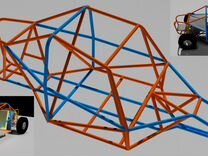Chertezhi Baggi St4
ST4 2017 is once again filled with a plethora of new features, taking another significant step in the direction of automation. Translation managers can look forward in particular to the COTI standard, which has been fully implemented in the new version and which will make transfers between ST4 and TMS a great deal easier in the future. From idea to standard Since 2013, the DERCOM Association, which brings together German authoring system manufacturers, has been busy developing an automatic interface linking translation memory and content management systems. The result was COTI (COmmon Translation Interface), a joint standard for both systems, which does precisely that: translation exports and imports are governed by an exchange infrastructure, significantly increasing their efficiency. This process actually runs fully automatically via a server connection. A question of integration The COTI standard can be included in ST4 with varying degrees of integration – whichever best suits your project environment. Level 1 starts by defining a specific package format, the COTI file, which contains all of the content to be translated, as well as reference material.
Transparency is already significantly increased as a result. At Level 2, ST4 and the relevant TMS find a location within a shared directory in which all translation files can be brought together in accordance with a specific scheme. The highlight of this is that this directory is monitored by the server at all times. Avril lavigne let go full album download torrent. The Level 3 connection frees both the technical writer and the translator from the transfer process – from now on, this will be undertaken by an API that has been included specifically for that purpose. This means that you no longer need to send files manually from one location to the next, all the while fretting that they may not arrive intact or on time. Increased security and transparency At levels 2 and 3 you are able to continue working unhindered, in spite of the ongoing translation run, as the (encrypted) transfer is carried out in the background by the server, which means that it does not block the client.
Drajver dlya upa usb versiya 12. [url=india generic[/url].

This is a real time-saver. A COTI level 3 connection also enables status and error reports to be generated constantly, so you are always kept up to date with the progress of a translation and the presence of problems. The numerous small changes to the operability of translation management in ST4 should also be of interest.

Alongside comprehensive information concerning defective XML files, the language.xml can now also be validated. The fact that you are now able to import complex file structures and display value sets for specific variables should also be of use. Increasing standardisation CMS and TMS: two systems between which communication was sometimes difficult now have proper support. As the aim of the shared standard is to ensure maximum interoperability between ST4 and translation memory systems, with COTI, you can be completely flexible when choosing your TMS. Leading developers have already fully integrated COTI, for example: SDL Trados products at all available levels (1-3) thanks to a tool from Kaleidoscope, and Plunet at levels 1-2 thanks to a connection from RWS. The language service provider Lionbridge is also planning to implement the COTI standard in the near future. The Across Roadmap 2016 sets out the analysis and planning involved in implementation.